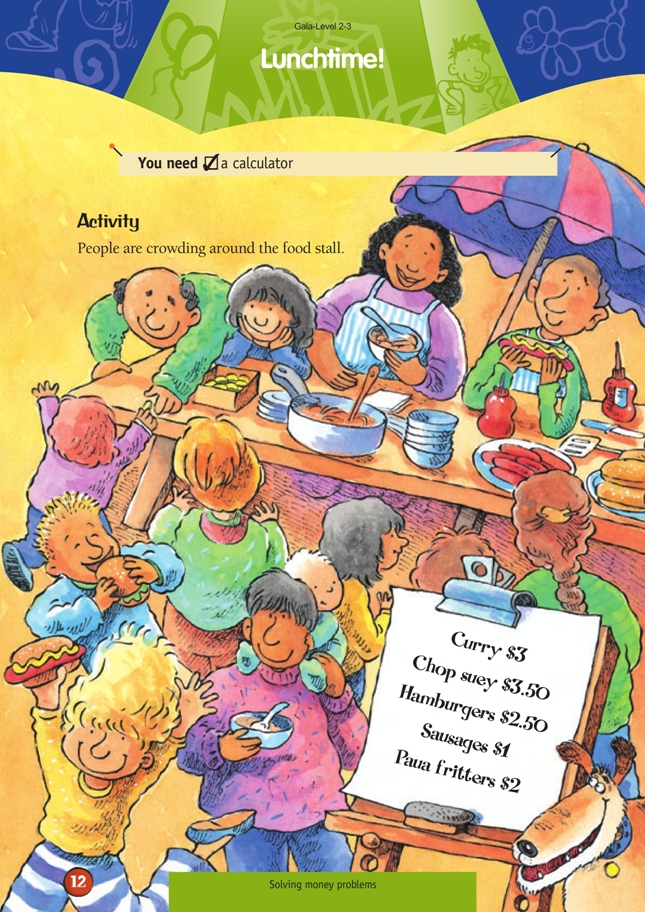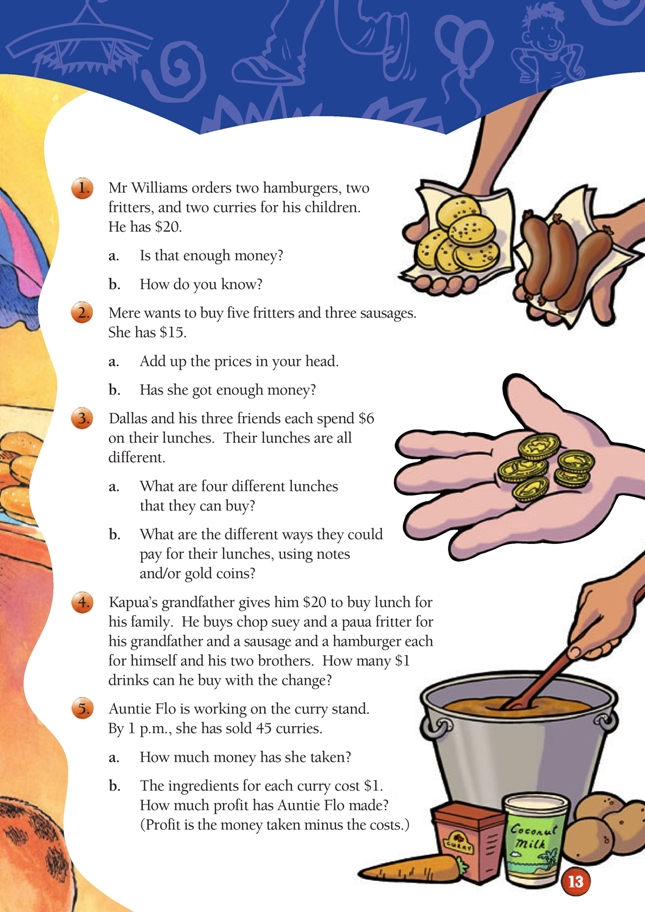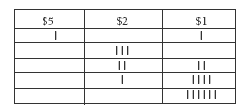This is a level 3 number activity from the Figure It Out theme series.
A PDF of the student activity is included.
Click on the image to enlarge it. Click again to close. Download PDF (589 KB)
use additive strategies to solve money problems
use multiplication to solve problems
A calculator
Encourage the students to work out the problems mentally, using their own preferred and varied methods. Your main task will be to ensure that the students think carefully about the information given, understand what the problem is asking them to do, and look for the important information that will help them to solve the problems.
Ask supplementary questions or give hints if the students are stuck. For example:
• What is the question asking you to do?
• How many hamburgers does he buy?
• How much is that?
• How did you work that out?
• Can you add them all together?
A few students may need to model the situations with toy money, and others may like to keep some brief records on scratch paper or in a calculator memory. You might also suggest that some organised listing could help keep track of their progress:
For question 3b, the students could use a table to find all the possible ways they could pay for a $6 lunch, using notes and/or gold coins:
Ask the students to explain how they worked out the answers, especially combining small amounts of money. You could follow up the set task by asking the students to write and share their own lunchtime problems with the class.
The students will need to understand profit and how to calculate it to answer question 5. You could work through a simple problem with the students before they begin the question. For example, Mr Larson sells 50 sausages at $1 each. He has bought the sausages for 25 cents each. How much profit did he make?
Answers to Activity
1. a. Yes
b. The total is $15, which is less than $20.
2. a. $13
b. Yes
3. a. Answers will vary, but here is an example
of four different lunches that cost $6:
3 sausages $3
1 curry $3
2 sausages $2
2 fritters $4
1 sausage $1
1 fritter $2
1 curry $3
2 hamburgers $5
1 sausage $1
b. $5 and $1
$2 and $2 and $2
$2 and $2 and $1 and $1
$2 and $1 and $1 and $1 and $1
$1 and $1 and $1 and $1 and $1 and $1
4. 4 drinks. He has spent $16 ($3.50 + $2 + $7.50 + $3) so has $4 left for drinks.
5. a. $135
b. $90



